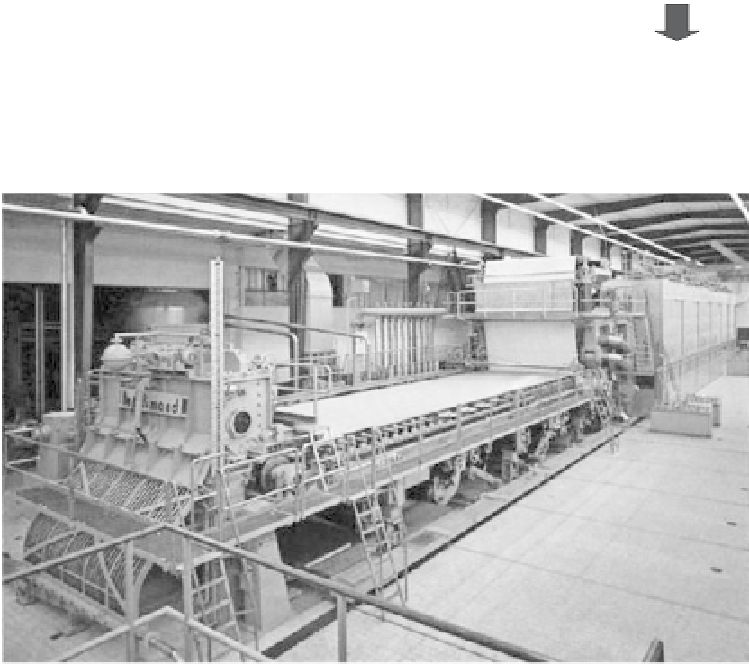Agriculture Reference
In-Depth Information
MG
cylinder
Air drier
Reel
Post-dryer
section
(6 driers)
Pre-dryer section
(16 driers)
Press section
(2 presses)
Fourdrinier
table
Grammage
/ moisture
scanner
Gas heated
cylinder
White water recirculation
Fig. 13.14.
Diagram of a paper machine.
Fig. 13.15.
An industrial paper machine. Foreground: the headbox feeding the fourdrinier table; middle
distance: a vertical press section; background: the drying section.
13.7 Conclusion
preparation is spread on a wire on which the
pulp suspension is dewatered from 3 to 5 g/l
concentration to a wet sheet of 20-25% of dry
matter. This sheet is then transferred on a felt
to the press section to improve dewatering
before moving to the drying section, in which
the water is evaporated on rolls heated to 100-
110°C. The paper is rolled at the end of the
machine and stored before use.
Figure 13.14 shows a diagram of a paper
machine.
An industrial paper machine can produce
10-30 t/day. The wire width is 2-3 m and the
machine speed is 200-300 m/min. Figure 13.15
shows an example of an industrial paper machine.
The use of hemp in papermaking is focused
mainly on cigarette paper production,
because its long and resistant fibres allow the
manufacture of thin paper. The whole hemp
production is devoted to this use, as the whole
hemp plant can be considered for pulp pro-
duction, generating long and short fibres,
which can be used mixed or separate. The
application of long hemp fibres in tissue
paper increases wet resistance, improving
the quality of such products. Development of
the uses of hemp can also be orientated to
non-woven production.















































































































